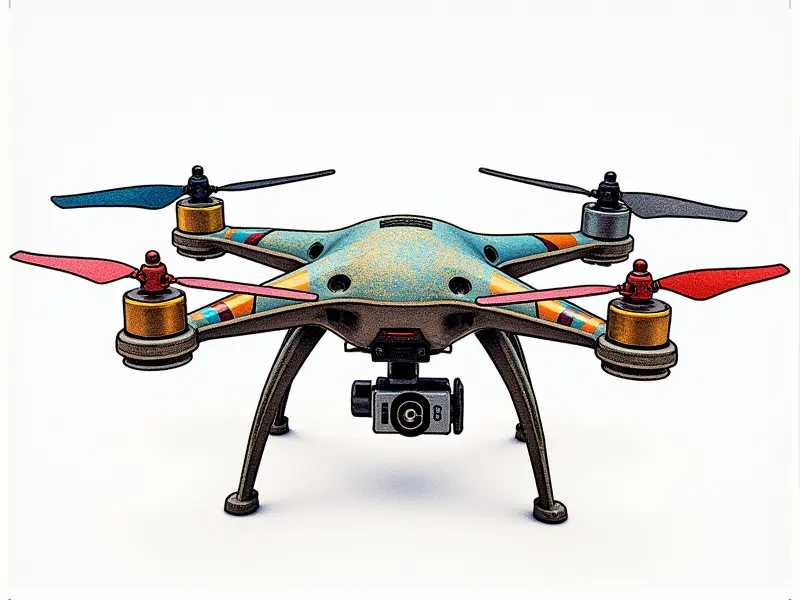Drone flying etiquette

Drone Etiquette 101: Be a Good Pilot
Welcome to the world of drone flying! As you embark on your aerial adventures, it's crucial to understand that drones are more than just toys; they're sophisticated pieces of technology with significant responsibilities attached. Being a good pilot means not only mastering the technical aspects but also adhering to ethical and legal guidelines.
Avoid the No-Fly Zones: Drone Safety Guide
One of the first things you should do before taking off is familiarize yourself with no-fly zones. These areas include restricted airspace, such as military bases, airports, and government facilities. Ignoring these restrictions can lead to serious legal consequences and even pose a threat to public safety.
Identify Restricted Areas
- Airports: Keep at least 5 miles away from any airport runway or helipad.
- Military Installations: Avoid flying within 1 mile of military bases and training areas.
- National Parks: Check park regulations for drone use; many have strict limitations to protect wildlife and visitors.
Top Drone Flying Tips for Beginners
Getting started with drones can be overwhelming, but these tips will help you get off the ground smoothly:
Pilot Training and Certification
- FAA Part 107 Certification: For commercial use, obtain a Remote Pilot Certificate from the FAA.
- Safety Courses: Consider enrolling in online safety courses to learn about emergency procedures and best practices.
Maintain Line of Sight
- Visual Line of Sight (VLOS): Always keep your drone within sight, even when using FPV goggles.
- Communication: Have a designated spotter to help maintain visual contact and communicate with other pilots.
Stay Safe and Legal with Drone Etiquette
The legal landscape for drones is complex, but staying informed about regulations will keep you on the right side of the law. The FAA, local aviation authorities, and community guidelines all play a role in ensuring safe and responsible drone use.
Compliance with Local Regulations
- Check Local Ordinances: Many cities have specific rules regarding noise levels, flight times, and altitude limits.
- Contact Authorities: Reach out to local aviation authorities for clarification on any ambiguous regulations.
The Dos and Don'ts of Drone Flying
To ensure a positive flying experience for everyone involved, it's essential to know the dos and don’ts of drone flying:
Dos
- Respect Privacy: Avoid filming or recording private property without permission.
- Communicate with Others: Inform nearby pilots about your flight plans to avoid airspace conflicts.
Don'ts
- Avoid Crowded Areas: Refrain from flying in densely populated areas like parks, beaches, and sporting events.
- No Night Flights Without Permission: Flying after sunset requires special permission due to visibility issues.
Respect Your Sky Neighbors: Drone Etiquette
Drones share the sky with other aircraft, including commercial planes and helicopters. Respecting these neighbors is crucial for everyone's safety:
Avoid Interference
- Stay Clear of Airspace: Keep your drone away from areas where manned aircraft are operating.
- No Night Flights Without Permission: Obtain clearance before flying at night to avoid disrupting air traffic control.
Essential Drone Flight Regulations to Follow
The FAA and other aviation authorities have established a set of rules that all drone pilots must follow. These regulations are designed to ensure safety, privacy, and compliance with federal law:
FAA Part 107 Rules
- Airspace Classification: Know the classification of airspace you're flying in (Class G, Class E, etc.).
- Flight Altitude Limits: Stay below 400 feet unless you have a waiver for higher altitudes.
Fly Right: Essential Drone Manners
Maintaining good manners as a drone pilot goes beyond just following the rules; it involves being considerate and respectful to others:
Be Mindful of Others
- Avoid Disturbing Wildlife: Keep your drone away from nesting birds and other sensitive wildlife areas.
- Noisy Operations: Minimize noise pollution by choosing quiet drones or flying in designated areas.
Keep the Peace in the Sky: Drone Rules
To maintain harmony in shared airspace, it's essential to follow established rules and guidelines. This includes respecting no-fly zones, adhering to altitude limits, and communicating with other pilots:
Maintain Orderly Operations
- Register Your Drone: Register your drone with the FAA if required.
- Mark Your Drone: Ensure your drone is clearly marked with identification information for easy tracking.
Stay Out of Trouble with Drone Manners
Avoiding legal and ethical pitfalls starts with understanding and adhering to the rules. By following these guidelines, you'll ensure a safe and enjoyable flying experience:
Avoid Unauthorized Flights
- No-Fly Zones: Stay away from restricted areas such as airports, military bases, and government facilities.
- Privacy Concerns: Respect people's privacy by not filming or recording private property without permission.
Safe and Sound: Drone Flight Protocol
To ensure your flights are safe and compliant with regulations, follow these protocols before taking off:
Preliminary Checks
- Battery Check: Ensure your drone's battery is fully charged.
- Weather Conditions: Avoid flying in extreme weather conditions like heavy rain or strong winds.
Conclusion
Drones offer a unique perspective on the world, but with great power comes great responsibility. By adhering to drone etiquette and following established regulations, you can ensure your flights are safe, legal, and enjoyable for everyone involved. Remember, being a responsible drone pilot is not just about avoiding trouble—it's about contributing positively to the community of aerial enthusiasts.

